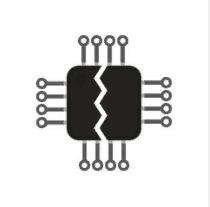Share this
Meltdown, Spectre and Your Backup Solution
by Sean Curiel on Jan 11, 2018 5:00:01 AM

There has been a lot of talk lately about the newly revealed vulnerabilities called Spectre and Meltdown. (If you’d like a better explanation of what these vulnerabilities entail, the most comprehensible article that I’ve found so far, that explains the situation in layman’s terms, is located here. )
 We understand these processor vulnerabilities have the potential for exploitation, but “What do backups have to do with this picture?” you might be asking.
We understand these processor vulnerabilities have the potential for exploitation, but “What do backups have to do with this picture?” you might be asking.
First of all, Microsoft patches were released on January 3, 2018, and shortly after, complaints arose that some computers were going into an unbootable state if they used a certain chipset. Microsoft's response was to delay the release of the update for this chipset. This further reinforces the age-old adage of "Backup before you update".
Furthermore, while the security world’s attention has been turned to Spectre and Meltdown, there were other serious vulnerabilities discovered in some trusted backup solutions that you may be using, with the potential to allow an attacker access to systems and data.
This begs the question of how secure the backup software itself is that you are currently using? When evaluating a new backup solution, always research known security flaws and consider the entire exposure your backup solution will have to the world at large.
You’ll also need to be mindful of features and options (bells & whistles) your solution offers that are outside of your normal backup and restore functionality. Just because it is a feature you are not currently using, does not mean its integration cannot be taken advantage of.
Say, for instance, your backup solution has an option that automatically starts a VM of the machine in the cloud. What are the security and possible attack vectors on that specific feature of the software? Does the backup software in question store important high-level access credentials within your network (think vCenter, Office 365, SQL, Network shares, etc), and if so, how are those credentials stored, and how would you be alerted if they became compromised?
Your backups are typically your last line of defense, and if your newly integrated backup solution has published vulnerabilities that script-happy blackhats are actively scanning for, that’s something you’ll need to take active precautions against to ensure a bitcoin ransom note isn’t forthcoming.
NovaBACKUP's complimentary backup strategy guide addresses many of how data can become hijacked or corrupted. Download it today or schedule a free consultation with one of our backup experts.
Share this
- Pre-Sales Questions (109)
- Tips and Tricks (100)
- Industry News (56)
- Reseller / MSP (38)
- Best Practices (34)
- Security Threats / Ransomware (29)
- Disaster Recovery (26)
- Applications (25)
- Cloud Backup (24)
- Storage Technology (23)
- Backup Videos (22)
- Compliance / HIPAA (22)
- Virtual Environments (17)
- Technology Updates / Releases (9)
- Infographics (8)
- Backup preparation (5)
- Products (US) (3)
- Company (US) (1)
- Events (1)
- Events (US) (1)
- May 2025 (1)
- April 2025 (2)
- March 2025 (1)
- February 2025 (2)
- January 2025 (2)
- December 2024 (1)
- November 2024 (1)
- October 2024 (1)
- September 2024 (2)
- August 2024 (1)
- July 2024 (2)
- June 2024 (2)
- May 2024 (1)
- April 2024 (2)
- March 2024 (2)
- February 2024 (2)
- January 2024 (1)
- December 2023 (1)
- November 2023 (1)
- October 2023 (1)
- September 2023 (1)
- August 2023 (1)
- July 2023 (1)
- May 2023 (1)
- March 2023 (3)
- February 2023 (2)
- January 2023 (3)
- December 2022 (1)
- November 2022 (2)
- October 2022 (2)
- September 2022 (2)
- August 2022 (1)
- July 2022 (1)
- June 2022 (1)
- April 2022 (1)
- March 2022 (2)
- February 2022 (1)
- January 2022 (1)
- December 2021 (1)
- November 2021 (1)
- September 2021 (1)
- August 2021 (1)
- July 2021 (1)
- June 2021 (1)
- May 2021 (2)
- April 2021 (1)
- March 2021 (2)
- February 2021 (1)
- January 2021 (1)
- December 2020 (1)
- November 2020 (1)
- October 2020 (1)
- September 2020 (4)
- August 2020 (2)
- July 2020 (1)
- June 2020 (1)
- May 2020 (1)
- April 2020 (1)
- March 2020 (3)
- February 2020 (2)
- January 2020 (2)
- December 2019 (1)
- November 2019 (1)
- October 2019 (1)
- August 2019 (1)
- July 2019 (1)
- June 2019 (1)
- April 2019 (1)
- January 2019 (1)
- December 2018 (1)
- November 2018 (2)
- August 2018 (3)
- July 2018 (4)
- June 2018 (2)
- April 2018 (2)
- March 2018 (2)
- February 2018 (2)
- January 2018 (3)
- December 2017 (1)
- September 2017 (1)
- May 2017 (2)
- April 2017 (5)
- March 2017 (4)
- February 2017 (1)
- January 2017 (1)
- December 2016 (1)
- November 2016 (1)
- October 2016 (2)
- September 2016 (1)
- August 2016 (3)
- July 2016 (2)
- June 2016 (2)
- May 2016 (7)
- April 2016 (8)
- March 2016 (1)
- February 2016 (2)
- January 2016 (12)
- December 2015 (7)
- November 2015 (5)
- October 2015 (6)
- September 2015 (1)
- August 2015 (2)
- July 2015 (2)
- June 2015 (2)
- May 2015 (1)
- April 2015 (4)
- March 2015 (3)
- February 2015 (4)
- January 2015 (2)
- October 2014 (4)
- September 2014 (8)
- August 2014 (5)
- July 2014 (7)
- June 2014 (3)
- May 2014 (3)
- April 2014 (9)
- March 2014 (7)
- February 2014 (7)
- January 2014 (5)
- December 2013 (4)
- October 2013 (7)
- September 2013 (2)

